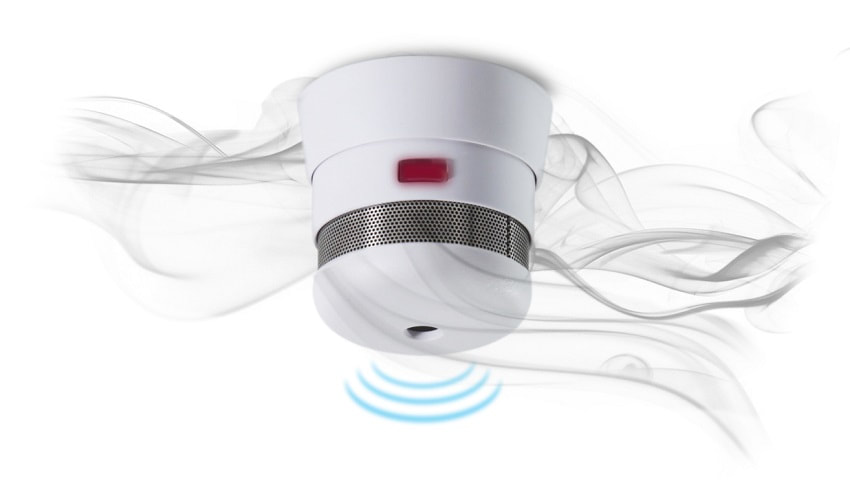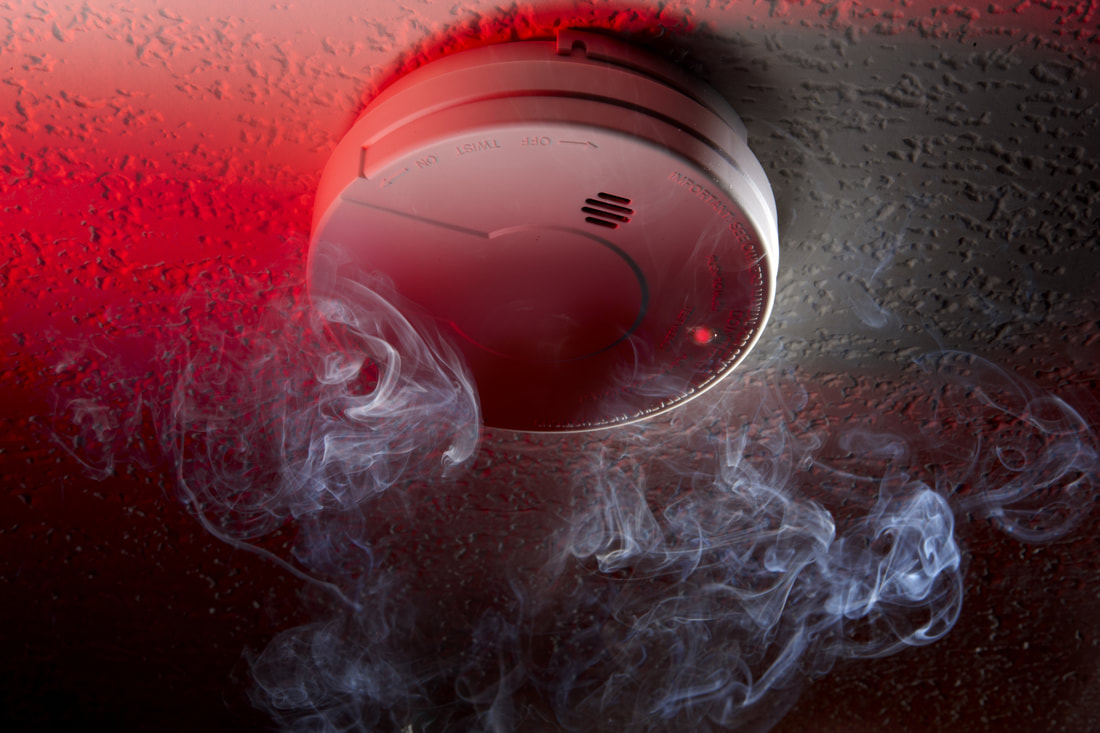|
People who are sleeping do not smell smoke and are unlikely to wake up during a fire. The most effective way to ensure house occupants wake up and get to safety is to install smoke alarms. · legal requirements · how many alarms? · where to locate alarms · maintenance. Legal requirements? Smoke alarms are a requirement under New Zealand Building Code clause F7 Warning systems. This applies to new homes and all existing homes undergoing building work. Acceptable Solution F7/AS1 requires Type 1 smoke alarms, which must have: · a hush button to silence the alarm for at least 60 seconds · a test button · a sound level that complies with NZS 4514:2009 Interconnected smoke alarms for houses – not less than 75 dBA at the sleeping position and not more than 100 dBA at 1.8 m height. (The standard can be downloaded for free.) On floors with bedrooms the smoke alarms must be located either in every sleeping space or within 3.0 m of every sleeping space door. In this case, the smoke alarms must be audible to sleeping occupants on the other side of the closed doors. In multi-storey homes there must be at least one smoke alarm on each level, however having an alarm in each sleeping space is considered preferable. Although there are several types of alarms that can be used to comply with Building Code requirements, Fire and Emergency New Zealand recommends hard-wired alarms or photoelectric alarms with batteries that last up to 10 years. F7/AS1 does not require smoke alarms in houses to be interconnected, but this is a good idea (and it is a requirement in a part of NZS 4514 that is not referenced). With interconnected alarms, when one smoke alarm detects fire smoke, all alarms will sound. Some models connect wirelessly. Under the Residential Tenancies (Smoke Alarms and Insulation) Regulations 2016 all rental homes must have smoke alarms: · The alarms must be either hard wired or photoelectric battery alarms with a battery life of at least 8 years. · If alarms have a battery, it is the tenant’s responsibility to replace the battery when it is worn out. · There must be at least one smoke alarm installed in the sleeping space or within 3 metres of the entrance to the sleeping space. · There must be an alarm on each floor where there is a habitable space however having an alarm within each sleeping space is preferable. How many alarms? Fire and Emergency New Zealand recommends installing an alarm in each sleeping and living space and interconnecting them – a sensible approach to ensure full compliance with F7/AS1. New alarms are available that are smaller and more discreet with longer battery life than the older models. Where to locate alarms? Alarms should ideally be installed on the ceiling, at least 200 mm from a wall or a ceiling beam to avoid dead air space. With sloping ceilings the alarm should be 200–500 mm from the apex. An alternative (but not preferred) position is high on a wall, at least 100 mm from the ceiling and 600 mm from corners to avoid dead air pockets. To reduce the risk of false alarms or faults, do not install: · in a kitchen, garage or bathroom · near a heat source such as a heat pump or solid fuel burner · in damp or draughty areas. Installing Smoke alarms is recommended in all sleep-outs. Larger homes At least two smoke alarms are needed in extended plan houses. Separated sleeping areas At least two smoke alarms are needed where there are two sleeping areas separated by the living area. Placement of smoke alarms At the very least, a smoke alarm should be placed between the sleeping area and living areas. More than one storey Where a house has more than one storey there should be at least one smoke alarm on each level. Maintenance Vacuum over smoke alarms to avoid dust build-up, and test with the test button monthly. The smoke detection element can be tested annually with an incense stick. Battery alarms should be replaced every 10 years. Updated: 30 August 2018
1 Comment
18/2/2019 03:37:39 am
Gratitude is a good habit that takes time to develop. Like every good or bad habit, they say it only takes about twenty days to develop. I am curious if this will actually work if you have been doing the wrong things for more than a decade. I feel I am going to die a slow and painful death if I don't develop gratitude soon. Everything we see and feel deserves to be thanked for. Being able to do so is already something we all should be thankful for to begin with. Not a lot of people will be able to see whatever we are seeing as of the moment and if it's something that does not kill us, then we all should be thankful and see beauty in it.
Reply
Leave a Reply. |
BLOG
June 2024
Categories |
||||||||
LocationLocated on Grahams Road, we are right in the centre of Christchurch, making it a lot easier on the whole for people to reach out to us for help at any time during the day. |
|







 RSS Feed
RSS Feed